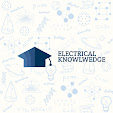SMART GRID [SELF-HEALING, RESILIENCE]
SMART GRID
What is Smart Grid
Smart Grid is simply
a communications system overlay on the existing electrical grid to make the
electrical grid more controllable and much more efficient in the delivery of
energy. The communications systems will be connected to strategically placed
sensors throughout all four segments of the electrical grid: Generation,
Transmission, Distribution, and Consumers.
A smart grid is a
modernized electrical grid that uses analog or digital information and communications
technology to gather and act on information - such as information about the
behaviors of suppliers and consumers - in an automated fashion to improve the
efficiency, reliability, economics, and sustainability of the production and
distribution of electricity. Electronic power conditioning and control of the
production and distribution of electricity are important aspects of the smart
grid.
Self-Healing
Self-heal ability is the property that enables
a system to perceive that it is not operating correctly and, without human
intervention, make the necessary adjustments to restore itself to normality.
Dependable Systems: Systems that are globally
trustworthy with respect to their ability to always deliver their service.
Fault-tolerant systems: Systems in which faults may occur but do not affect the
performance of the system.
1 A self-healing grid
is expected to respond to threats, material failures, and other destabilizing
influences by preventing or containing the spread of disturbances. This
requires the following capabilities:
2 Timely recognition
of impending problems
3 Redeployment of
resources to minimize adverse impacts
4 A fast and
coordinated response to evolving disturbances
5 Minimization of
loss of service under any circumstances
6 Minimization of
time to reconfigure and restore service
Resilience
1. The capability of a
strained body to recover its size and shape after deformation caused especially
by compressive stress
2. An ability to
recover from or adjust easily to misfortune or change
3. Resilience is the
property of a material to absorb energy when it is deformed elastically and
then, upon unloading to have this energy recovered. In other words, it is the
maximum energy per volume that can be elastically stored. It is represented by
the area under the curve in the elastic region in the Stress‐Strain diagram.


No comments:
If you have any doubts, please let me know